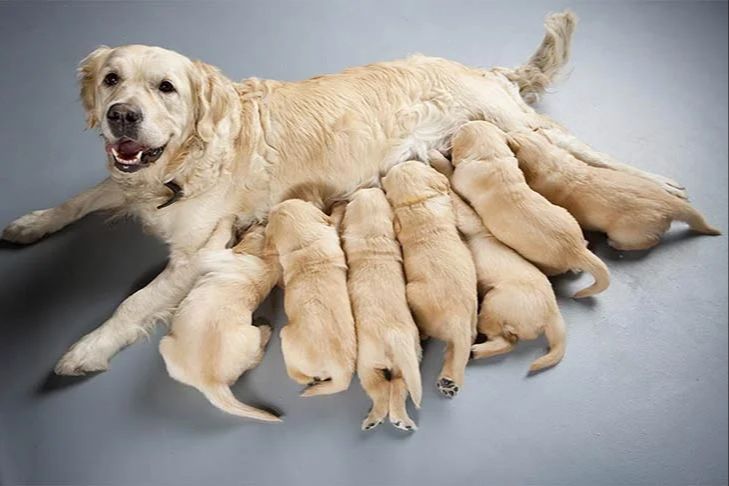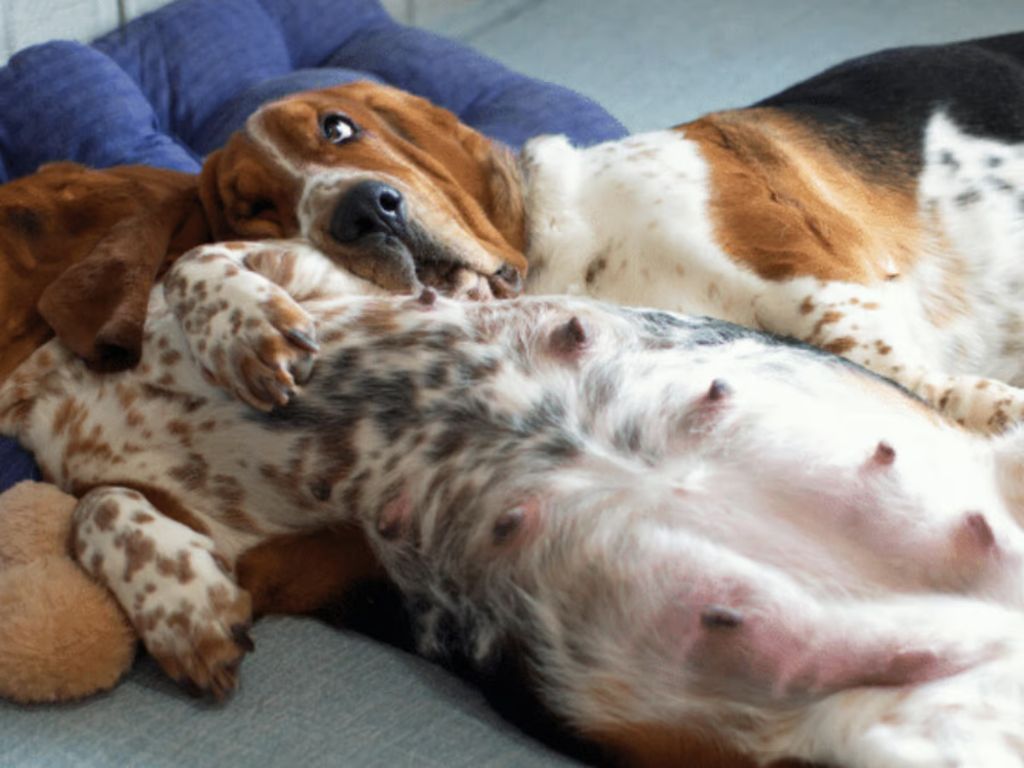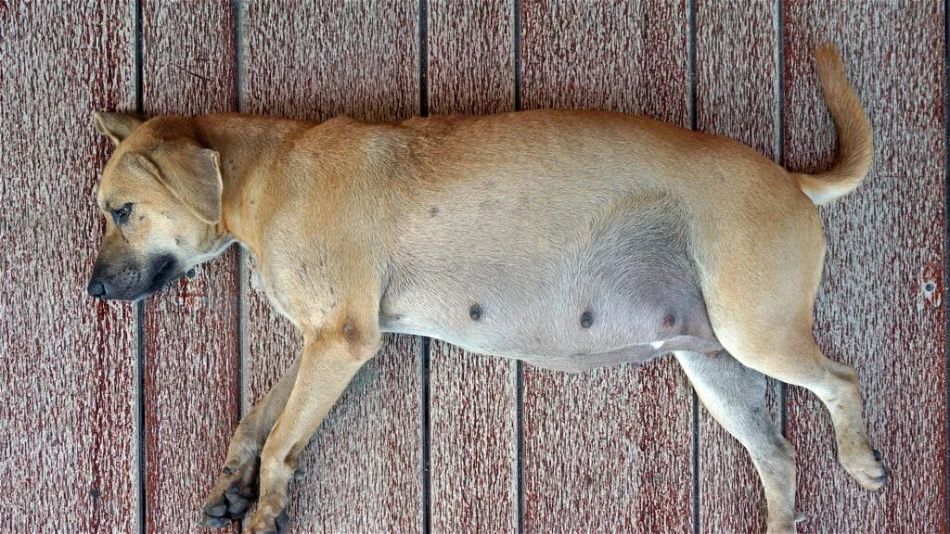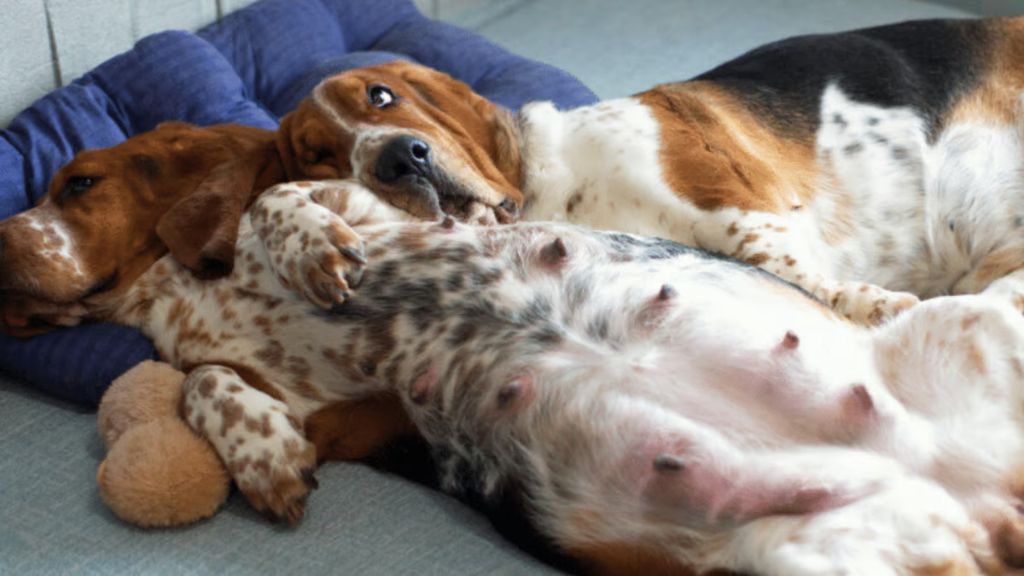Introduction
The number of nipples on a dog comes from its ancestors dating back millions of years. However, genetic variation and other developmental factors can lead to some puppies having an odd number of nipples. This article will discuss the typical nipple number range in dogs, the evolutionary reason behind having nipples in pairs, how nipple development occurs, abnormal nipple counts, and caring for a dog’s nipples. We’ll also briefly touch on nipple removal surgery. By the end, you’ll have a better understanding of why your dog may have an odd number of nipples.
Typical Nipple Number Range
Most female dogs have between 8 to 10 nipples, while male dogs tend to have 10 to 12 nipples (American Kennel Club). This nipple range allows female dogs to adequately nurse a typical litter size, which averages around 6 puppies but can sometimes be larger (A-Z Animals). The slightly higher nipple count in male dogs is thought to be a developmental relic from the embryonic stage when the sex organs are undifferentiated.
Nipples are arranged in two rows on the underside of the belly in both sexes and can number from as few as 6 to as many as 12. While 8-10 and 10-12 are the typical nipple counts for female and male dogs respectively, it’s not abnormal for some individuals to fall outside of this range (PetMD). The number of nipples does not indicate anything about the dog’s health or reproductive capabilities.
Evolutionary Explanation
The prevailing theory for why dogs often have an odd number of nipples is related to maximizing feeding capacity for large litters. In the distant evolutionary past, the ancestors of modern dogs typically had large litters of puppies. Having an odd number of nipples, versus an even number, allowed the maximum number of puppies to nurse simultaneously.

For example, if a mother dog had 10 nipples, this allowed 5 pairs of puppies to feed at once. But if she had 9 nipples, it could accommodate 9 puppies feeding concurrently. Having odd nipple numbers was advantageous as it optimized feeding capacity to ensure all puppies in large litters could nurse efficiently (Sorenmo, 2011).
Nipple Location
Nipples on both male and female dogs are located on their underside from the chest area down to the groin area. The nipples are arranged in two rows that typically extend from the dog’s armpit area down to the groin area on both sides of the torso. The nipples are located on the dog’s mammary glands, which are structures that produce milk in female dogs. https://www.akc.org/expert-advice/health/male-dogs-nipples/ The specific nipple arrangement may vary slightly between breeds and individual dogs, but generally follows this two row pattern on both sides of the torso.
Nipple Development
Nipples begin developing in utero around day 35 of pregnancy. At this stage, the nipples are small bumps that protrude slightly. Over the next few weeks of pregnancy, the nipples gradually enlarge and become more pigmented. By week 8, the nipples are raised, bulbous and darkly pigmented, in preparation for nursing pups after birth. This nipple development occurs due to complex hormonal changes during pregnancy. According to an article on RexiPets, “The trigger for nipple growth and changes is the increased prolactin and estrogen that occur after mating and conception.” Essentially, nipple development is an early sign that pregnancy and mammary gland changes are underway.

It’s important to note that false pregnancy can also lead to nipple changes in dogs. So nipple growth alone should not be used to definitively diagnose pregnancy in dogs. Other symptoms like abdominal enlargement, weight gain, mood changes and ultrasound confirmation should be used along with nipple changes to fully determine if a dog is pregnant.
Litter Size and Nipples
There is an old belief that a dog’s litter size can be predicted by counting her nipples, with the idea being that the number of nipples indicates the maximum number of puppies she can nurse. However, research shows this is not an accurate way to predict litter size.
According to the Cuteness, telling a dog’s litter size by her number of nipples is an outdated belief. The number of nipples a female dog has does not actually correlate to the number of puppies she will have in a litter.
As explained on Daily Puppy, both male and female dogs are born with a range of eight to twelve undeveloped nipples. While male dogs’ nipples remain nonfunctioning, a female dog’s nipples develop during pregnancy to produce milk for nursing. The number that develop has no relation to litter size.
Per K9ofMine, while most dogs have eight to ten nipples, the average litter is only about five puppies. There is a statistical correlation between nipple number and litter size, but nipple number cannot accurately predict litter size.
Abnormal Nipple Count
While most dogs have 8 to 10 nipples, some dogs can have an abnormal number of nipples. There are a few potential medical reasons for this:
Too few nipples: Dogs normally have at least 6 nipples, so having only 1-5 nipples is considered abnormal. This can be caused by a hormone imbalance in the womb that disrupts normal nipple development. It can also be associated with chromosomal or genetic abnormalities.

Too many nipples: While not as common, some dogs can have more than 10 or even 12 nipples. This is known as hyperplasia and is likely due to increased estrogen exposure in the womb during nipple development. It is often benign but can occasionally be linked to hormonal disorders or reproductive tumors.
If a dog has an abnormal nipple count, especially accompanied by other symptoms, it’s a good idea to have them checked out by a vet. Changes in nipple size, swelling, discharge, or bleeding could indicate a mammary gland tumor or other condition requiring treatment. Fortunately, most dogs with extra or missing nipples live normal healthy lives. But monitoring for other changes is advised.
Nipple Removal
Some owners choose to have their dog’s nipples removed for various reasons. The most common reasons are:
Mammary tumors – If a mammary tumor develops, the veterinarian may recommend removing the affected nipple and mammary gland to prevent the tumor from spreading. This procedure is called a mastectomy and may involve removing multiple glands and nipples if the cancer has spread (Source).
Injury prevention – For some breeds like Dobermans that are prone to nipple injuries, owners may elect to have some nipples removed as a preventative measure.
Cosmetic reasons – Some owners choose to have their dog’s nipples removed for cosmetic purposes, especially if the nipples are enlarged or swollen.
While nipple removal may be recommended in certain situations, it is still considered a major surgery for dogs. Owners should discuss the risks and recovery time with their veterinarian before deciding on this procedure.
Caring for Nipples
It’s important to keep a nursing dog’s nipples clean and healthy. Here are some tips:
- Gently wash nipples with warm water and a mild soap before and after nursing. Pat dry thoroughly.
- Apply a warm compress to sore or irritated nipples for 10-15 minutes 2-3 times per day. Use a clean towel soaked in warm water or microwavable hot packs designed for dogs.
- Avoid using human nipple creams or moisturizers, as these are not formulated for a dog’s sensitive skin. Products containing lanolin are typically safe.
- Watch for signs of mastitis like hot, red, swollen nipples and contact your veterinarian if detected. Mastitis requires antibiotic treatment.
- Make sure nursing puppies have a proper latch and feed one at a time. Improper latching can damage nipples.
- Give the nipples a rest by separating the mother from the puppies between feedings.
- Ensure the mother dog is eating high-quality food and drinking plenty of water to support milk production and nipple health.

Keeping the nipples clean and allowing time to heal between feedings can prevent cracking, irritation, and infection. Contact your vet at the first sign of trouble.
Conclusion
In summary, the main reason dogs often have an odd number of nipples is due to evolution. Having an odd number allows for maximum feeding capacity if the mother dog has a large litter. While the average nipple count is 8-10, having an extra nipple or an odd number like 9 is fairly common and not typically a cause for concern.
Key points include:
- An odd number of nipples allows each puppy to have their own nipple while nursing.
- The average nipple count is 8-10, but some natural variation occurs.
- Both male and female dogs can have an odd number of nipples.
- Abnormal nipple counts are rare and may indicate an underlying health issue.
- Odd nipple numbers are not dangerous and dogs manage fine with asymmetry.
While odd nipple counts may seem unusual, they serve an evolutionary purpose and are part of natural genetic diversity in dogs. As long as your dog is healthy, there’s no need to worry about an odd number of nipples.